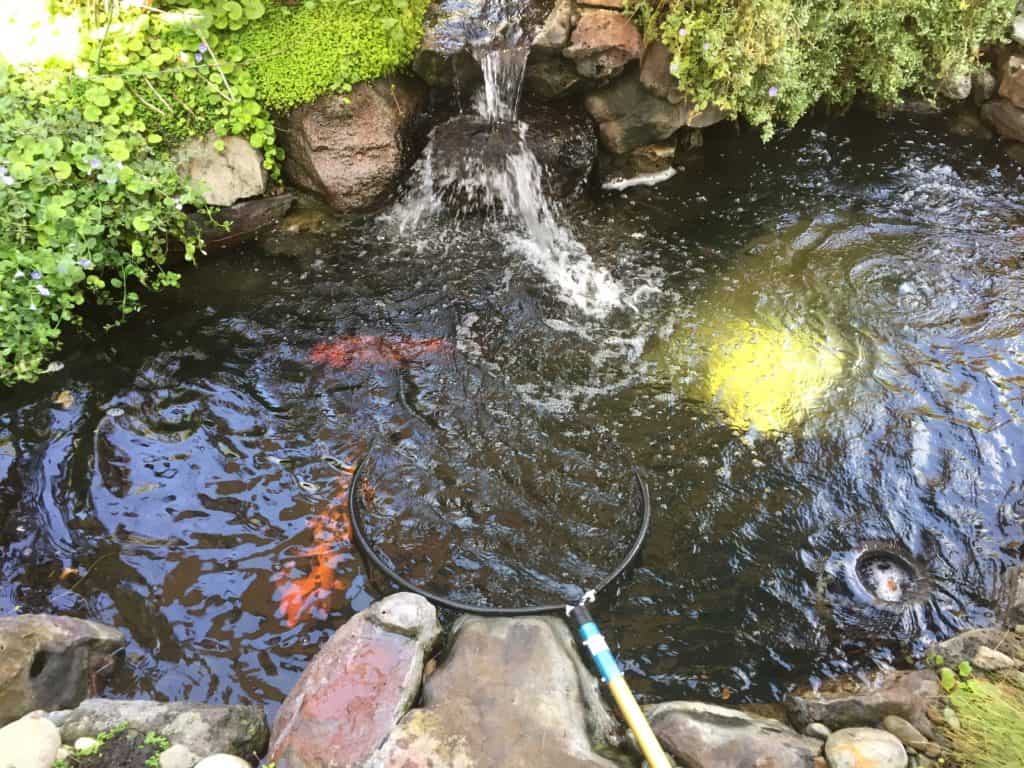Many pond owners will prophylactically treat their ponds every spring, regardless of many criteria. Whether it’s an anti-parasitic, a “clarifier” or a “refresher” treatment, you probably DON’T need to be adding most pond treatments. Using unlicensed products is a dangerous idea and if you aren’t sure of your total pond volume, you can severely hurt your fish.
“But I’ve always done it that way.”
The most dangerous phrase for most humans. If you use this rationalization, you can skip any improvements to modern transportation and medicine. Unless you have severe “fish adding disease,” you are likely dosing your fish in toxic chemicals for no reason. As our wonderful practice manager puts it, “it’s the same as taking cold medicine when you don’t have a cold.” If you are not adding fish and have the same confirmed diagnosis every spring and have been prescribed a treatment by a qualified aquatic veterinarian, you can continue to add your prescribed product. If not, you are dumping chemicals on your fish FOR NO REASON.
What pond treatments should I be adding to my pond?
We’ve come up with a list of products you can safely add to your pond on a regular basis. All those “bacterial” or “enzyme” cleaners are a waste of money, but they likely won’t hurt your fish. We recommend you save your money and upgrade your water quality test kit. Spring is a time to start prophylactic algae treatments, like changing your UV bulb or adding some barley, NOT dumping in chemicals.
Most over-the-counter, anti-parasitic products are not tested for potency and efficacy. Some contain carcinogens. There is no one product that treats all parasites. And unless you have added fish over the winter, you may not actually have a parasite problem.
If I’m not adding anything, what should I do for my fish in the spring?
Spring is a great time to dust off your old maintenance routine. We understand that ponds in the winter are not too stimulating. Your fish aren’t eating, so they’re not coming up to say “hi” as often, and your filtration is stuck on low power mode. Expect to see a slight hiccup in your nitrogen cycle as everything returns to summer processing levels. Use your test kit to make sure things are on track.
If you can’t see the bottom of your pond, you aren’t sure how thick the debris is at the bottom of your pond, or someone talked you into an Aquascape setup, you might want to consider a complete spring cleaning. Usually, this entails removing the fish from your system temporarily to get them out of the way of dangerous hydrogen sulfide. Before evacuating your fish, make sure you know a few important tips about pH and temperature, and if you hire someone to do it for you, make sure they know what they’re doing.
How do I know if my fish are sick and need to be treated?
There are many behavioral and physical signs to be aware of in sick fish. If you see any of the included signs, first thing – check your water chemistry. Poor water quality is the #1 cause of disease in fish. If you’ve let your maintenance routine slide, now’s the time to get back to business.
If you are concerned about an issue with your fish, call your local aquatic veterinarian. If your cat, dog or horse was sick, wouldn’t you do the same? A veterinarian will make a qualified diagnosis and set safe, effective treatment.
Please use caution when using over-the-counter products. They are not checked by the FDA or checked for potency or efficacy.

